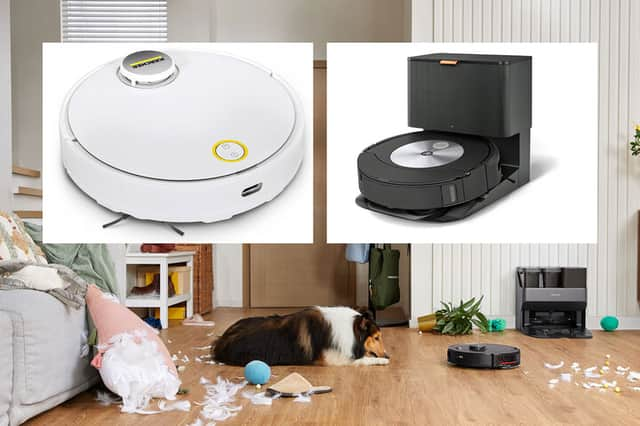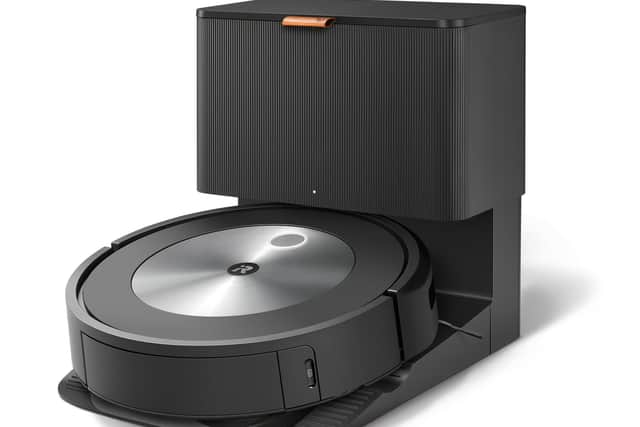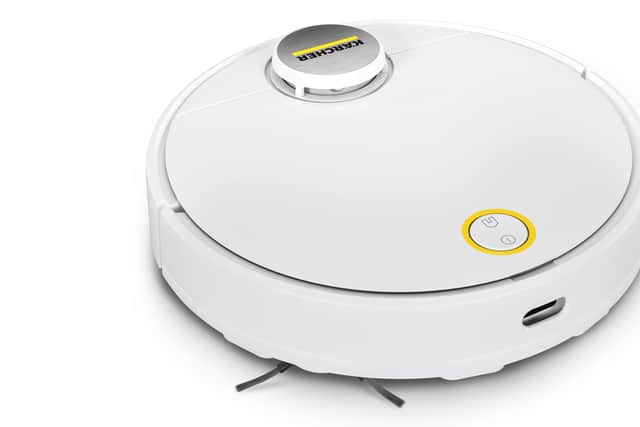Best robot vacuum cleaner UK 2023


This article contains affiliate links. We may earn a small commission on items purchased through this article, but that does not affect our editorial judgement.
Vacuuming is one of those household jobs that always needs doing. Whether it’s spilled crisps from the kids, pet hair from the dog or general dust from every day living, the floors always need a good clean.
The problem is that between work and other family and social commitments, it can be hard to find the time to make sure the floors in your home are pristine at all times - especially when there’s a sudden and unexpected mess created. And this is where a robot vacuum cleaner comes in.
These autonomous robots will effectively keep a house well swept on a continual basis while you go about your daily routine. This includes areas that are difficult to reach with a standard vac, like under beds and sofas. Although you may need to initially sync the bot to your wi-fi for full functionality, the vast majority of models are a breeze to use.
How do robot vacuums work?
Unlike robot lawn mowers that require the installation of a boundary wire, all a robot vac needs is a slim, unobtrusive mains-powered charging/docking station sited next to a wall to function correctly. Simply switch on the vac using the top-mounted button or, as is the most common method, via the accompanying app, and it will head off across the floor using its bank of sensors – and sometimes a camera or two – to map the room and navigate around obstacles like furniture and toys.
Granted, when you first set your new robot vac on its way, you may be alarmed by the haphazard nature of its cleaning. This is a normal process the robot undergoes while it maps the room it’s in. Although some models seem to use a more erratic room mapping process than others, they all get the job done eventually. The secret is not to watch it and just let it do its thing.
Robot vacs have brushes underneath and suction power to suck up any debris – in a similar way to a traditional vacuum cleaner – and also have inbuilt bins to collect debris. They’re also designed to be slimline, which means they can fit under most pieces of furniture for a real thorough clean.
When the robot vac has finished cleaning – or when the battery is running out of juice – it will return to its basestation for a full recharge, in readiness for its next outing.
We’ve chosen seven of the best robot vacuums that are available to buy right now.
How to choose a robot vac
Before you jump into the robot vac arena, we should point out a number of key considerations that may affect how well it performs. Depending on how dusty your home is, you may need to empty the robot vac’s dustbin on a daily basis and, if you have pets, possibly once or even twice during a single vacuuming session. This is because all robot vacs have small dust collectors – around half a litre – that can fill up very quickly.
If you have pets, we would always advise a robot vac with a separate bin that’s attached to the robot’s charging unit. With these models, when the robot’s own bin is full, it will return to its dock and empty its contents into a much larger bagged dustbin. All you have to do is throw the dust bag away every month or so and fit a new one.
Another thing to consider is the amount of clutter you have on the floor. Although many modern robot vacs are equipped with sensors and cameras to detect and avoid obstacles like furniture legs and toys, many will tangle themselves on loose wires, shoelaces and some items of loose clothing. Therefore, the more simple the room’s configuration the more efficient the cleaning process.
Most higher-priced robot vacs can detect heights like stairs and other drop offs but with some cheaper models you may need to draw a prohibited zone on the phone app – or simply block off the danger area with a household item.
Now you’re familiar with the most basic characteristics of robot vacuum cleaning, why not dip into this carefully curated selection of fine contenders and see which model is best for you.


All robot vacs have very small dust collectors which need to be emptied on a fairly regular basis. This is a big issue if you have cats and dogs because the robot’s tiny bin will soon fill up with bundles of hair, possibly within just 10 minutes. Roomba’s ‘plus’ models get around this issue by having an attractively-styled slimline docking system with a much larger (bagged) bin built into it.
Hence, whenever the J7’s small 0.46-litre dust collector reaches capacity, the machine trundles back to the charging base where all floor matter is automatically sucked into the larger bin. And that means you don’t have to keep emptying the small bin yourself. After a month, simply dispose of the larger bin bag.
Other great features include twin rubber brushes, excellent suction and full obstacle avoidance that will ensure the J7 skirts around wires, toys, even dog mess. A round of applause, too, for the developers of the iRobot Home app which makes it very easy to programme schedules and command the J7 to clean specific rooms on different days.
But for pet owners especially, it’s the brilliant bin-emptying system that really clinches this deal.

